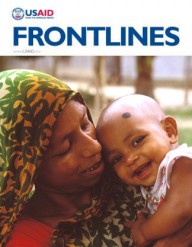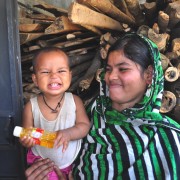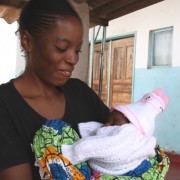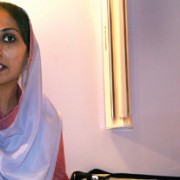Every May we celebrate Mother’s Day and the extraordinary contributions of mothers everywhere: giving and protecting life, nurturing hope, and supporting communities large and small. But as we observe this day, we also reflect on the all-too-many women worldwide for whom bringing children into the world can be dangerous or even deadly.
The reality that we know today is unacceptable and heartbreaking—as nearly 300,000 mothers and 3 million newborns continue to die every year from causes we know how to prevent. Without access to a skilled birth attendant who provides lifesaving care in rural settings, a mother’s risk of dying at what should be the most joyous moment of her life is 120 times higher than here in the United States.
That’s why, two years ago, we launched an initiative called Saving Mothers, Giving Life. Designed to help mothers during labor, delivery and the first 24 hours postpartum, the global effort will support lifesaving interventions during the most vulnerable period for maternal and newborn death.
In many cases, something as simple as knowing the danger signs during pregnancy or arranging transportation to a clinic ahead of time is all it takes to save a mother’s life. That’s why we’ve focused our efforts on getting women the medical care they need during an emergency. In Zambia, where distances are vast and roads are perilous, we’re supporting motorcycle ambulances that now connect women to emergency services within the two-hour window around birth when the risk to women and their newborns is greatest.
We have already begun to see real evidence of progress, and the results are inspiring. The number of women who received the care they needed to protect their children from being born with HIV rose by 28 percent in Uganda and 18 percent in Zambia. And in both countries—over just one year—maternal mortality declined by roughly a third in the districts and facilities where we worked.
This approach represents a new way of working—one in which we’re harnessing cutting-edge data analysis, tailoring our solutions to local needs, and forming groundbreaking partnerships to deliver real, measurable results.
But we’re not just focusing on mothers. We’re also pioneering new ways to keep safe their most prized possessions: their children.
Every year, 6.6 million children die from diseases we know how to prevent, like infection and malnutrition. That’s why, two years ago, Ethiopia, India and the United States joined UNICEF to rally the world behind a new approach to child survival. It was a powerful moment, as more than 174 countries and nearly 450 civil society and faith organizations stepped forward to join the call.
Since then, the call has gained traction exactly where it matters most—in the countries with the highest rates of child mortality. Nearly a dozen countries have launched their own local calls to action, set national targets, and are creating evidence-based business plans to focus resources in acutely vulnerable regions. With this kind of local leadership, we’re realizing immense results. We recently celebrated with Ethiopia—once one of the most dangerous places for a child to be born—as the nation marked an impressive milestone: reducing child mortality by two-thirds and helping millions more children survive and thrive.
By tapping into new technologies and working hand-in-hand with local partners, we can end the tragedy of child and maternal mortality. In doing so, we not only promote global prosperity, but take strides toward achieving our mission of ending extreme poverty around the world.













Comment
Make a general inquiry or suggest an improvement.